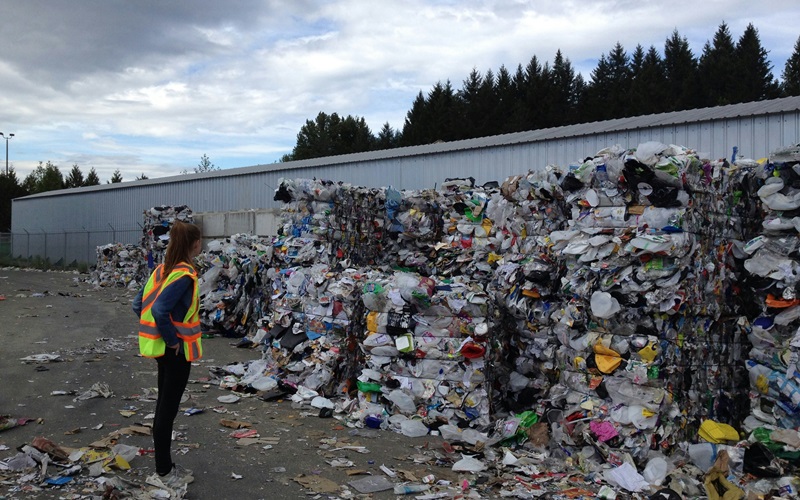As the world’s population continues to increase, so does the volume of waste produced, largely due to the widespread use of disposable products. Once hailed for its convenience and durability, plastic has unveiled its detrimental impact on the environment, contributing significantly to air, water, and land pollution.
Particularly alarming is the pharmaceutical industry’s contribution, generating over 300 million tons of plastic waste annually, with half of it being single use, as reported by the World Health Organization (WHO). This alarming statistic underscores the urgent need for environmentally friendly packaging solutions.
Transforming Consumer Behavior Toward Sustainability
Plastic pollution poses a grave threat to ecosystems, persisting for decades due to its non-biodegradable nature. This poses dire consequences for plant and animal life and human health, underscoring the urgent need for sustainable alternatives.
A profound shift in consumer behaviour is underway in response to escalating environmental concerns. According to McKinsey, consumer behaviour has shifted significantly, with 55% concerned about the environmental impact of packaging and a stunning 70% willing to pay extra for sustainable alternatives. Notably, companies like Pangea Organics are leading by example in the cosmetics industry by incorporating sugarcane bio-resin in their packaging, which is both disposable and recyclable, effectively reducing carbon footprints.
Rise of Biodegradable Packaging Solutions
This shift reflects a broader societal shift towards sustainable living, with consumers increasingly expecting corporations to take proactive steps towards positive change. This sentiment is echoed globally, with more consumers choosing eco-friendly products, particularly in emerging markets such as China. Driven by social media and the advocacy of younger generations, there is a growing demand for eco-conscious practices across various industries.
Advantages of Biodegradable Packaging Materials
Amid this sustainable revolution, biodegradable packaging stands out as a beacon of hope. Unlike typical plastics, biodegradable polymers can be naturally broken down by microbes in the soil. This technique produces water, carbon dioxide, and methane while reducing the environmental impact of conventional plastics.
The biodegradation process, although complex, can be influenced by factors such as chemical composition, water availability, and microbial activity. Enzymatic degradation, facilitated by microorganisms secreting enzymes, plays a crucial role in breaking down biodegradable polymers into energy-producing metabolites.
Innovative techniques, including UV light exposure and specific chemicals, accelerate the breakdown of biodegradable materials. Thermalgravimetric analysis offers insights into the degradation process, facilitating a better understanding of water loss and starch breakdown. Additionally, adjustments to pH levels and the application of pulsed electric fields can enhance and prolong the life of biodegradable packaging in diverse environments.
Sustainable Futures: Biodegradable Packaging Market Trends
Biodegradable packaging finds widespread application across various industries, including food, agriculture, retail, healthcare, and logistics. Its adoption substantially reduces food waste and environmental harm, aligning with sustainability goals across different sectors. Governments worldwide are amplifying demand for biodegradable packaging, driven by ongoing technological advancements and cost-effective manufacturing processes. Despite existing challenges, such as cost implications and infrastructural limitations, ongoing innovation and investment are poised to overcome these barriers, driving widespread adoption and market expansion.
Derived from natural resources or food and agricultural waste, biodegradable packaging materials encompass three primary types:
- Polylactic acid (PLA), derived from corn or sugarcane, offers durability but degrades slowly and requires specific conditions for complete decomposition.
- Polyhydroxyalkanoate (PHA), produced by microorganisms consuming specific foods, is entirely degradable but expensive to manufacture, primarily suited for specialised applications like medical packaging.
- Natural biopolymers, including starch, cellulose, and proteins sourced from plants or animals, boast non-toxicity and good barrier properties, although additives may be necessary to enhance strength.
Despite inherent strengths and weaknesses, these materials collectively contribute to waste reduction and environmental preservation.
While biodegradable packaging holds tremendous promise, it is crucial to acknowledge existing constraints, including economic factors and infrastructural requirements. Nonetheless, the increasing adoption of biodegradable packaging across industries signifies a significant stride towards a cleaner, more sustainable future.
Furthermore, recent market research conducted by the CMI Team forecasts robust growth in the global Biodegradable Packaging Market. With a projected compound annual growth rate (CAGR) of 6.2% from 2023 to 2032, the market is expected to reach USD 96.5 billion in 2022, surging to USD 135.3 billion by 2032. This anticipated growth underscores the escalating significance of biodegradable packaging in the years ahead.
How Switching to Biodegradable Packaging Makes a Difference
You might be wondering: How much of an impact could I make by switching to biodegradable packaging? It could drastically minimise an individual contribution to plastic waste and can reduce their carbon footprint. Shifting to eco-friendly packaging empowers people to do less harm to the environment. In OECD countries, where annual plastic waste production averages 238 kg per person, adopting sustainable packaging can result in significant reductions.
In contrast, non-OECD countries produce significantly less plastic garbage per person, averaging roughly 77 kg per year by 2060. The transition to biodegradable packaging. This transition enables individuals to make a positive contribution to environmental conservation by adopting eco-friendly packaging alternatives.
Furthermore, everyone emits around 4 tons of carbon dioxide each year along with other greenhouse gases like methane. Choosing sustainable packaging also helps to reduce our own carbon footprint, which contributes to the battle against climate change and enhances environmental health.
Sources
Global Biodegradable Packaging Market 2023–2032
Sustainability in packaging: Inside the minds of global consumers
Biodegradable Packaging Materials from Animal Processing Co-Products and Wastes
A Step toward Sustainability: A Review of Biodegradable Packaging in the Pharmaceutical Industry
See Also:



